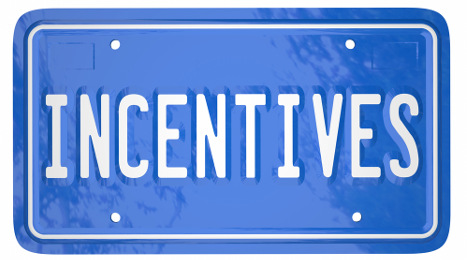Incentive spending puts industry on ‘unhealthy path’

The average per-vehicle amount automakers spent on incentives in July was up 12.5 percent over a year ago, leading some to wonder if we’re heading into dangerous territory.
“The sky isn’t falling yet,” said Alec Gutierrez, senior analyst for Kelley Blue Book, “but we are on an unhealthy path."
Gutierrez was speaking during a conference call Tuesday to discuss July sales results along with Mark Strand, senior manager of market intelligence for Autotrader.
“Incentives have certainly played more and more of a role in driving retail growth,” Gutierrez continued, noting that there was a big push for incentives early in July, particularly for pickup trucks. It did look like incentives were down through the close of the month, he continued, adding that results for the final week of July were still being tallied.
And incentives are not just cash rebates on the hood, he reminded, but include perks on the finance front such as low rates and extended terms.
So what could turn a dangerous path into a more treacherous trail?
“It’s tough to look at incentives in a vacuum,” Gutierrez said. “Just looking at raw incentive spend alone isn’t enough to tell the whole picture. We try and look at incentives and how they relate to average transaction prices.”
Right now, we’re at about a 9.2 percent average spend-to-transaction price ratio, Gutierrez said.
Over the last 10 years, he continued, the market hit a low point in 2012 where it was just shy of 8 percent. The high point, so to speak, came in 2008, when incentive spend was 9.7 percent of transaction price.
So in looking at today versus 2008, “it says that we are not historically in as bad a position as we’ve ever been. But if the trend continues, in the next 12 to 18 months, you’ll see the manufacturers spend at a point that is approaching levels that would point to a little bit more risk and uncertainty.
“So again, at the pace we’re going now, transaction prices are still growing; incentives happen to be growing faster. And if the trend continues unabated, I think we’re at a point that we would characterize, historically speaking, as slightly irresponsible.”
What might this mean for manufacturer health?
“It’s tough to say,” Gutierrez said. “It’s a very different environment today than in 2008 in terms of the way manufacturers are managing their residual portfolios. And that’s specifically related to rental volume; it impacts residuals and impacts their ability to lease and forces them to overincentivize. So we are seeing healthier practices on one side of the business, while cash incentives and other rebates are growing.”
Used-car demand & wholesale prices
Later during the discussion, one caller wanted to know if pent-up demand for used vehicles has been met.
“Pent-up demand is definitely not capped out,” Strand said, noting that average vehicle age has been stuck at 11.5 years for the last three years. As many new cars have gotten on the road, it’s not budging the average age out there.
“Used sales are up strongly this year,” he continued, “and used values are coming down a bit as more off-leases vehicles come back to the market.”
As for auction values, they’re down about 1 percent on a year-over-year basis, Gutierrez said. “That’s better than 2-3 percent a few months ago. In some respects, depreciation has stabilized versus this time last year. With that said, as volume continues to come back, we do believe the market will continue to trend down on a year-over-year basis.
“It wouldn’t surprise me to see in December, CPO inventory closing the year 2-4 percent below where we closed last year. Next year, I wouldn’t be surprised to see similar depreciation. I think in the years to come, 2-3 percent depreciation beyond trend is likely well within the realm of possibility.”
Strand talked about a couple of observations he’s made in the wholesale market.
“I’ve seen conventional wisdom developing that while CPO pricing and used values will continue to soften, there’s not the threat in the immediate term that you’re gonna see a collapse in used-vehicle prices. Demand is there. At the right price, people are going to buy the vehicles out there,” Strand said.
“The other thing developing is we’re seeing with rental car companies and dealerships, we’re seeing some pilots with Uber and Lyft. Our understanding is Uber is looking to build out a fleet of at last 200,000 cars to be leased. That’s going to take significant supply out of the wholesale market that would have gone to auction and put downward pressure on prices.”
In other words, we could see a moderate softening of used values, but not a collapse.
“If worried about softening new sales, OEMs can manage CPO smartly in terms of level of leasing and residual impact, thus keeping values and profit margins healthy to capitalize on the used market where there should be healthy demand,” Strand said.

 View The Latest Edition
View The Latest Edition

